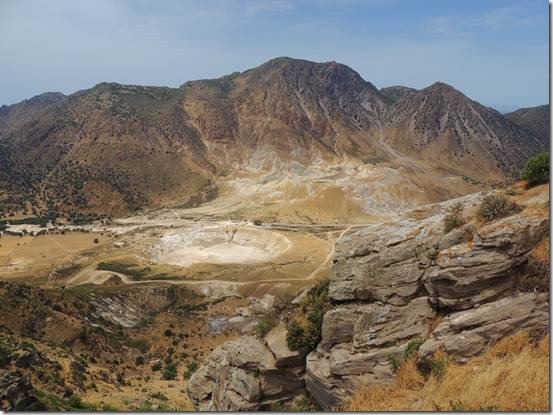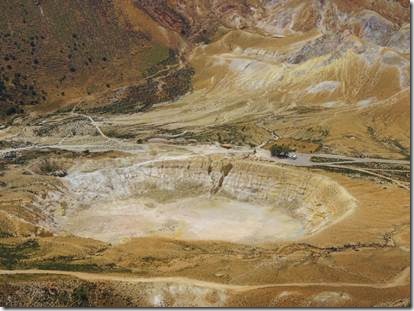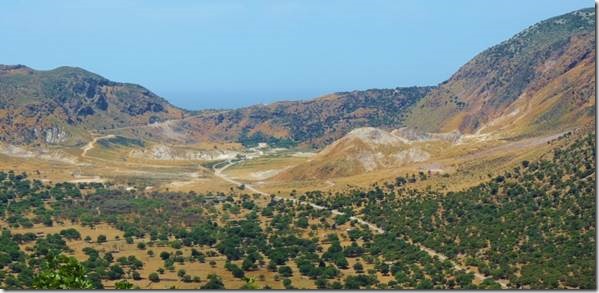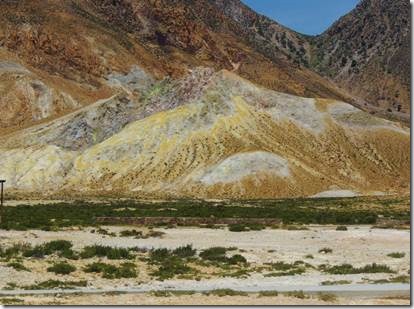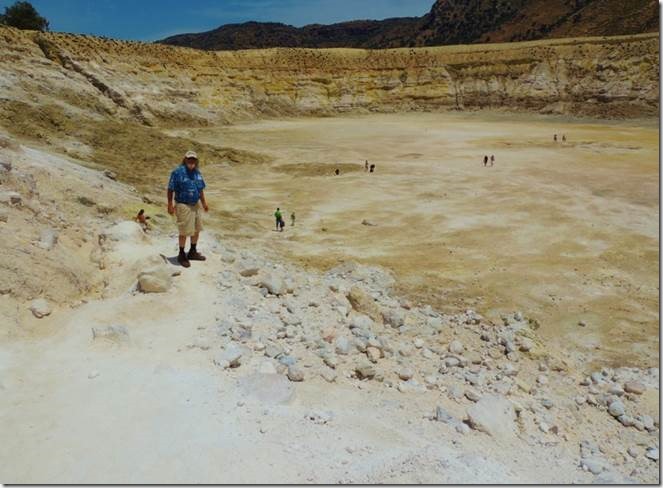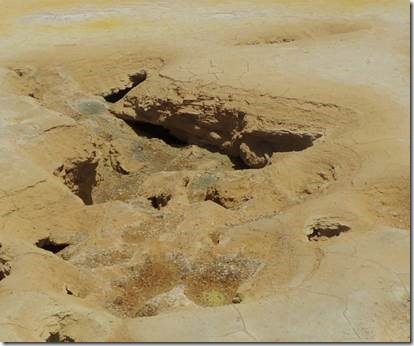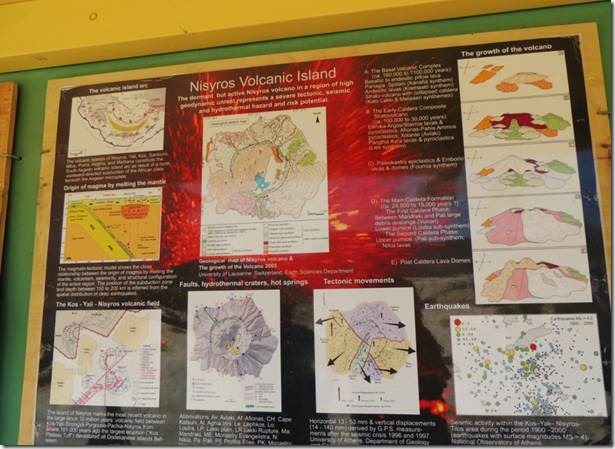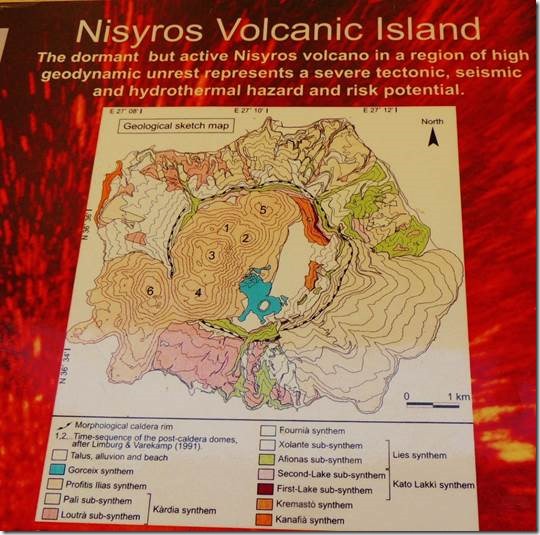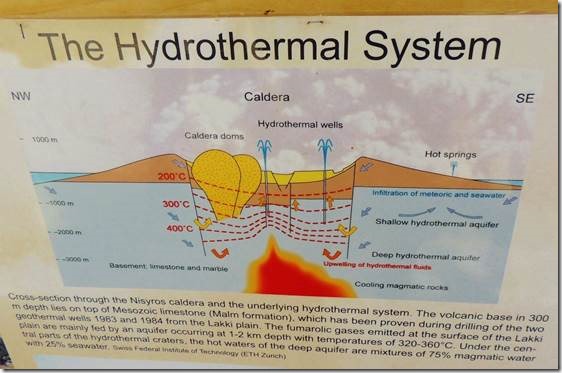Yasas,
So Santorini won’t be our favorite island; too crowded thanks to the 3 cruise ships in port and day trippers like us. It’s kind of like being in Provincetown in high season. But Randal loved cruising into the caldera on the ferry boat so it’s all worth it. We arrived about 11:30 am as our 7 am ferry from Ios didn’t actually get to Ios until 9:20 am so didn’t leave Ios until 9:30 am. To get back to Ios tomorrow we must take the 9 am ferry which island hops its way back to Ios getting us there after 1 pm. There are other prettier parts to this island we won’t see. But so it goes.
This email is an island hop back to Nisyros, to the volcano’s caldera. Santorini was also a volcano. I really should have paid more attention in my year of geology at UMass.
Ru
Nisyros Volcano Observatory The volcanic risks in the region
“The volcanic centers of Nisyros, Yali and Kos are part of the South Aegean Active Volcanic Arc, one of the two existing volcanic arcs in the Mediterranean. The first two (Yali and Nisyros) are the newest major volcanic centers of the said Arch. This region was the setting for the most violent eruption in the Mediterranean, 161,000 years ago; its products covered half of Kos island and its tephra is found today from Kalymnos to Tilos and the Turkish coast.
In the last 45,000 years, at least two devastating explosive eruptions occurred on Nisyros and two more on Yali, each of them blasting more than three billion cu. m. of magma. Ejected products were deposited in the greater area. A hiatus with regard to volcanic activity occurred between the above mentioned eruptions. This does not preclude a future repetition of devastating activity, a highly hazardous possibility for Nisyros and the neighboring islands.
Another grave volcanic hazard encumbers Nisyros. It pertains to hydrothermal explosions (release of superheated geothermal fluid). Such explosions occurred in 1871-73 and 1887 on the caldera floor (Lofos site). 10 well preserved hydrothermal craters attest to the existence of intense hydrothermal explosive activity in the last 4-5,000 years. As their causal effects (the superheated geothermal reservoir and the impermeable cap) are present, it is possible that such explosions may occur in the area of the caldera floor in the imminent future. As revealed by the first deep borehole in 1981 by PPC, Nisyros proved to be the most dynamic and the hottest (for such a geotectonic area) geothermal field in the world. Hydrothermal craters also constitute an attraction to thousands of visitors each year; such an unforeseen explosion could have devastating effects.”
|
View from Nikia after our visit to the volcano’s caldera. |
|
Close up of the caldera |
|
Photo taken on the way to the caldera. |
|
The hillside near the caldera had yellow soil |
|
Walking into the caldera which was big enough to make the people already inside look tiny from this distance. And it smelled just like rotten eggs, but not unbearably so. |
|
You couldn’t keep your hand over the hole (about 1 foot diameter) for more than a few seconds or it would have been scalded. There were dozens in the caldera |

